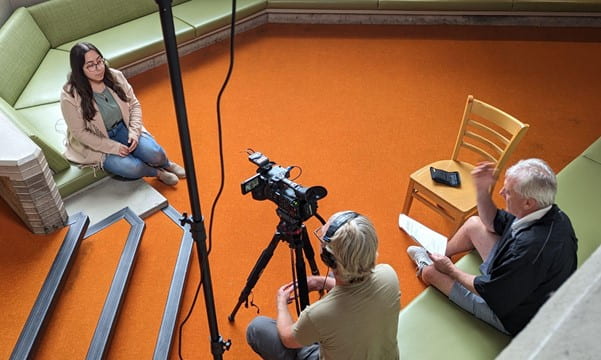By Heather Tripp, Video Specialist

Whether it’s filmed with a smartphone or a professional camera, video is no longer an option in our world. Video started to take over print over a decade ago and has grown to be a requirement for businesses and organizations across the world. While we are bombarded with all kinds of images, having a video of high quality can still set yours apart.
Video has become an important medium for disseminating scholarly information. This may come in the form of video summaries of research findings or conference proceedings. Academics choose to promote their publications or scientific experiments through video to make the content more engaging and reach a wider audience. This blog will present some tips for creating quality videos:
Before you begin, a few key elements to think about are:
-What are your goals/who is your audience? This dictates the pace and feel of the video.
– Hook your viewer in the first few seconds of your video. The first six seconds are key!
– Tell a story. Stories tend to draw the viewer in and keep them watching.
One large element that can make your video easier to create and look better is to do pre-production. Things like, scouting out the area you plan on filming the day before. Look at the lighting at that time of day. How busy is it? How loud? Are there unsightly things like trash that can be removed? If you need to plug in a light source, is there an electric outlet?
This is also a good time to check out your camera and gear. Are the camera and microphone batteries charged? Do you have enough space on your card? Contact any talent and make sure they know the time and place to meet you.
High quality smartphones can take decent video and do much of the work for you, but it still needs a human touch to keep things creative and visually pleasing. One way of doing this is using the Rule of Thirds. Divide your screen into 9 cubes using 4 gridlines. By positioning key elements along the gridlines, you’ll end up with better compositions.


The rule of thirds identifies four points at the center of each grid line intersection that your subject should intersect. The subject should hit 2-3 of these points. The image above has the subject more to the side, leaving room for the addition of text.
Another trick is to use a shallow depth of field, which keeps your subject in focus, but the background is fuzzy. It’s almost always best to have a simple background, and using a shallow depth of field can make even the most distracting settings less so.
Once you have your video recorded and edited, you may want to consider adding music. Most popular social media sites have their own music library to browse through. I you want to add something of your own, keep in mind you need something either in the public domain or through a royalty free website. These can offer a single, one-time purchase, or a variety of subscriptions. Rules are different on each site, so make sure to read them.
Finally, where do you want your video to live? Popular places for horizontal videos continue to be YouTube and Vimeo. Social sites like TikTok and Instagram are best for vertical video.
Do you need support with making videos for your courses or scholarly endeavors? Please don’t hesitate to contact me.



